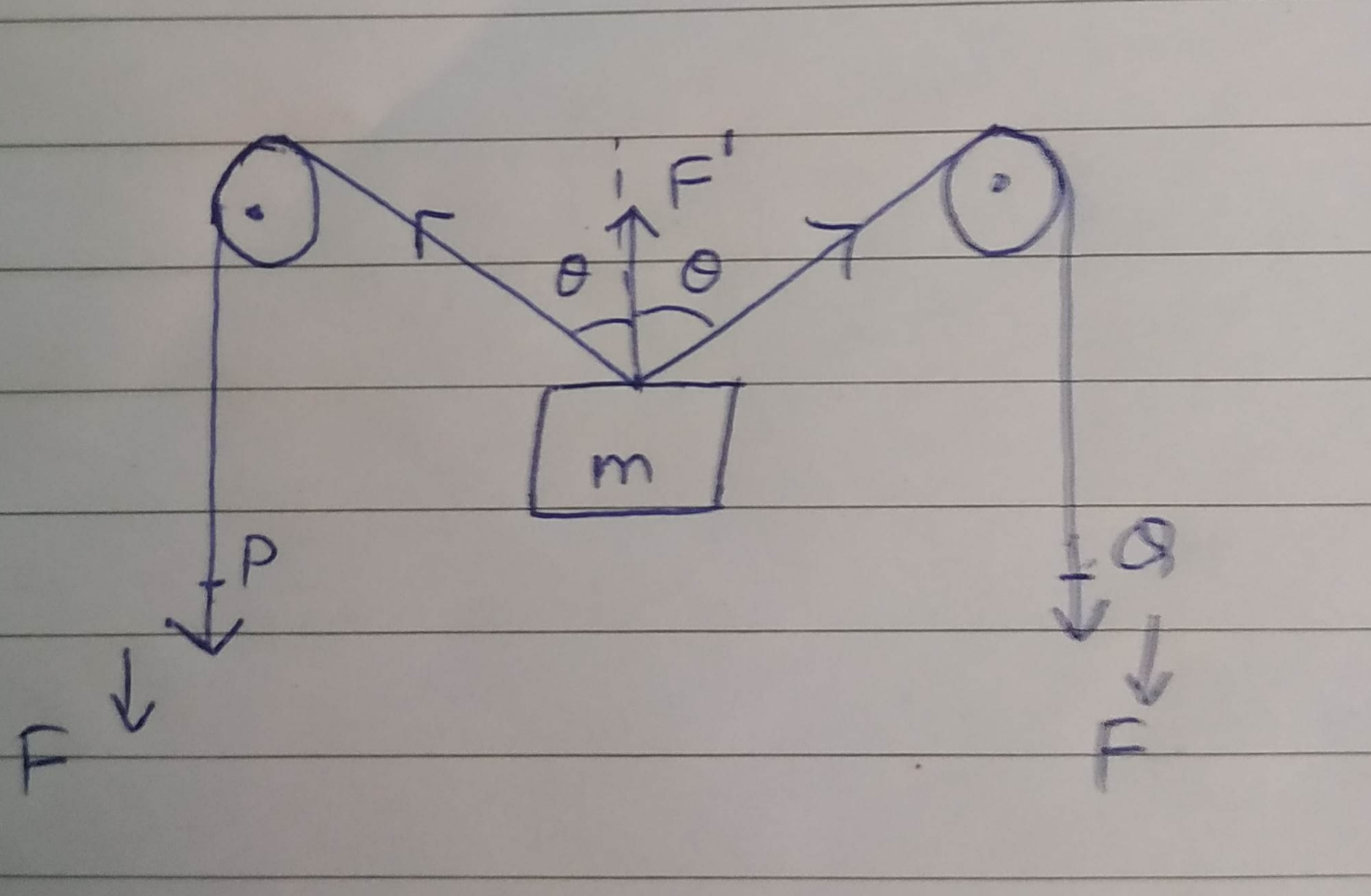Here is question with two pulleys. https://physics.stackexchange.com/questions/342861/why-is-velocity-of-the-mass-v-cos-θ-why-not-2v-cos-θ
Its clear that u =(v/cosθ) - equation 1$u =\frac{v}{\cos \theta} \tag{1}$
But now consider same arrangement with at both ends instedinstead of v$v$ are being pulled by force F$F$ and the upward force acting on mass will be F'$F'$. Here

F'=2Fcosθ - equation 2$F'=2F\cos\theta \tag{2}$
If we consider velocity or acceleration of point P$P$ compared to that of mass, it shall be given by equation 1$(1)$.
So, my question is, what is actually changing in both scenarios that we give 'force on mass is component of force by rope'force on mass is component of force by rope but in both cases 'velocity of rope is component of velocity of mass'.velocity of rope is component of velocity of mass? Because mass is mass in both cases there is no change in it and mass have no vector significancea scalar quantity, so why is the nature of force is different than that of acceleration (/velocityor velocity).?

